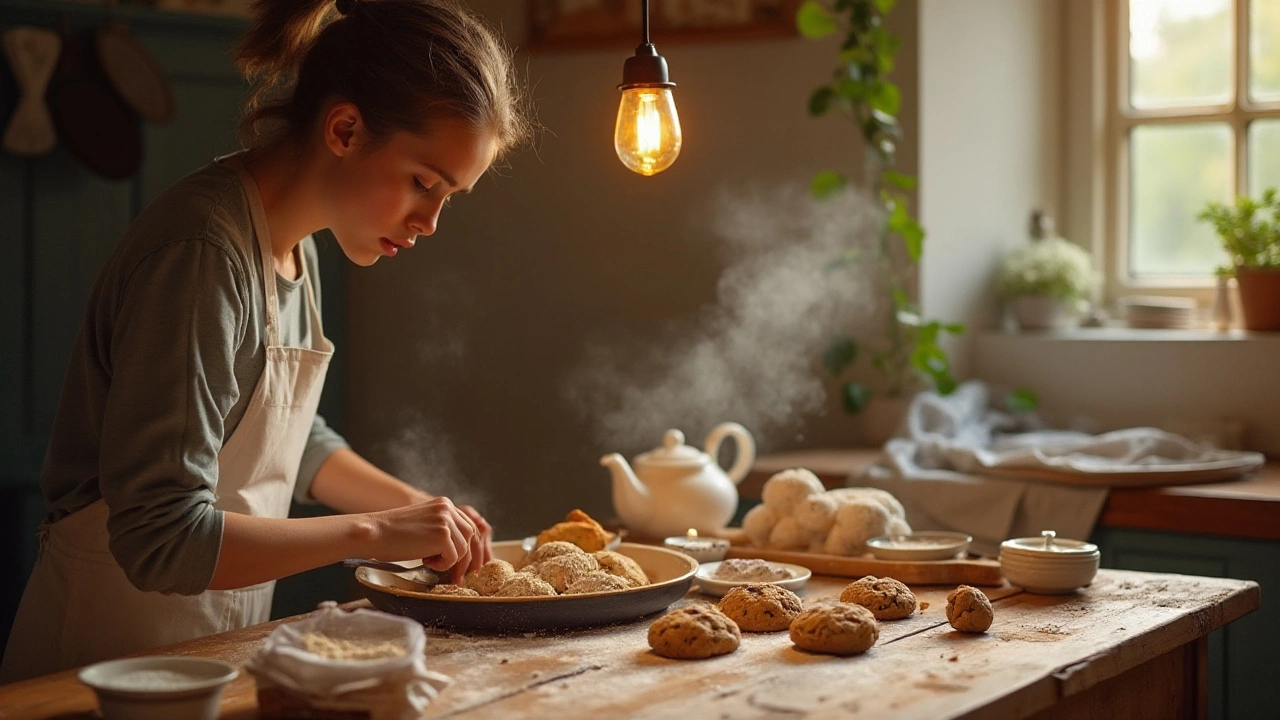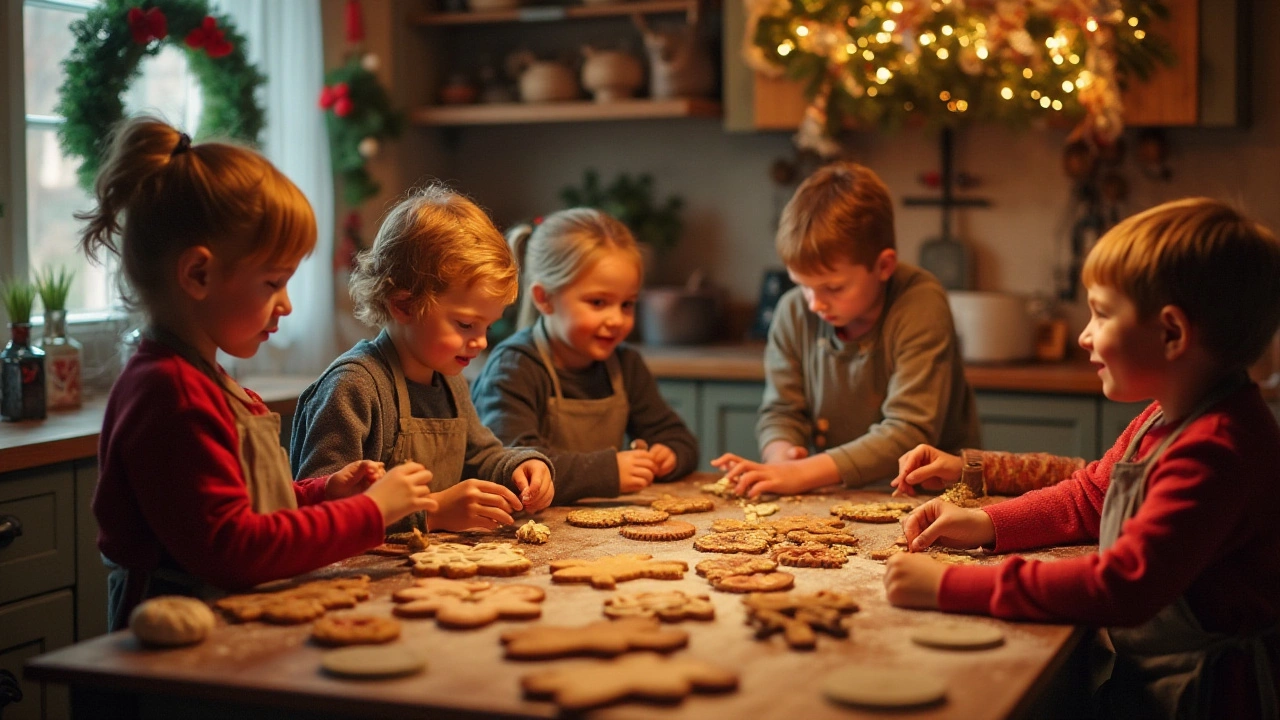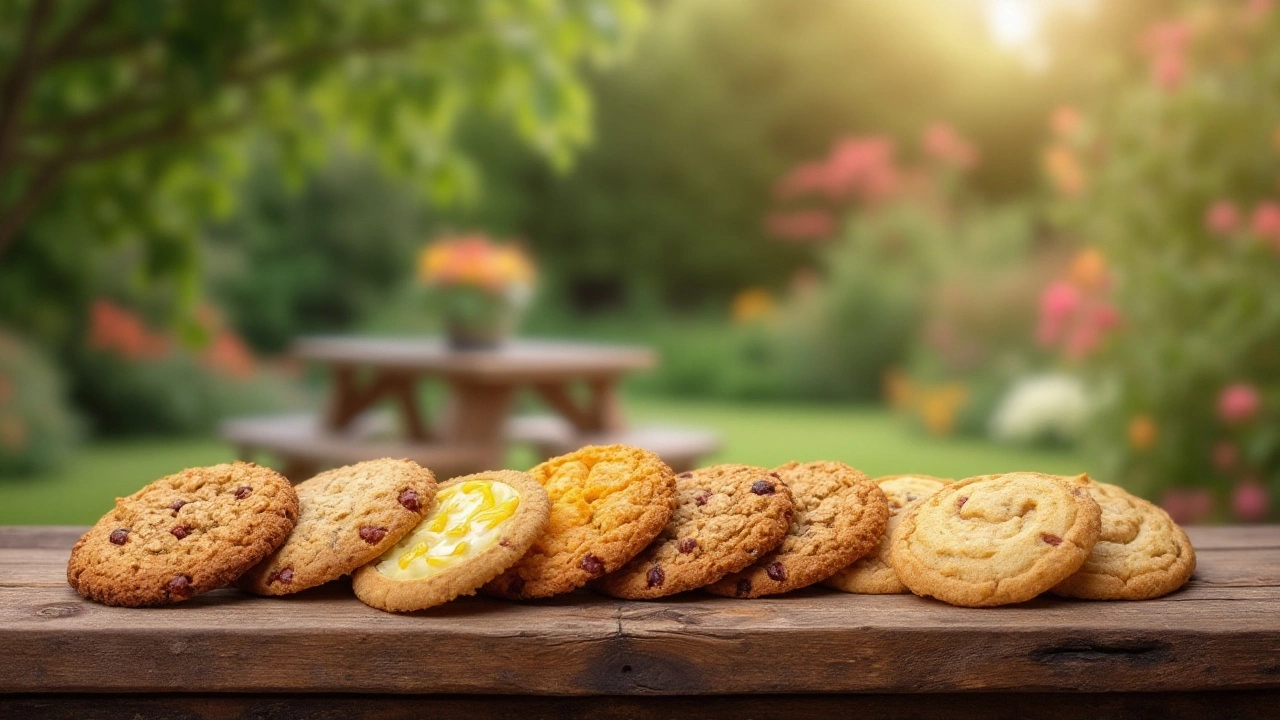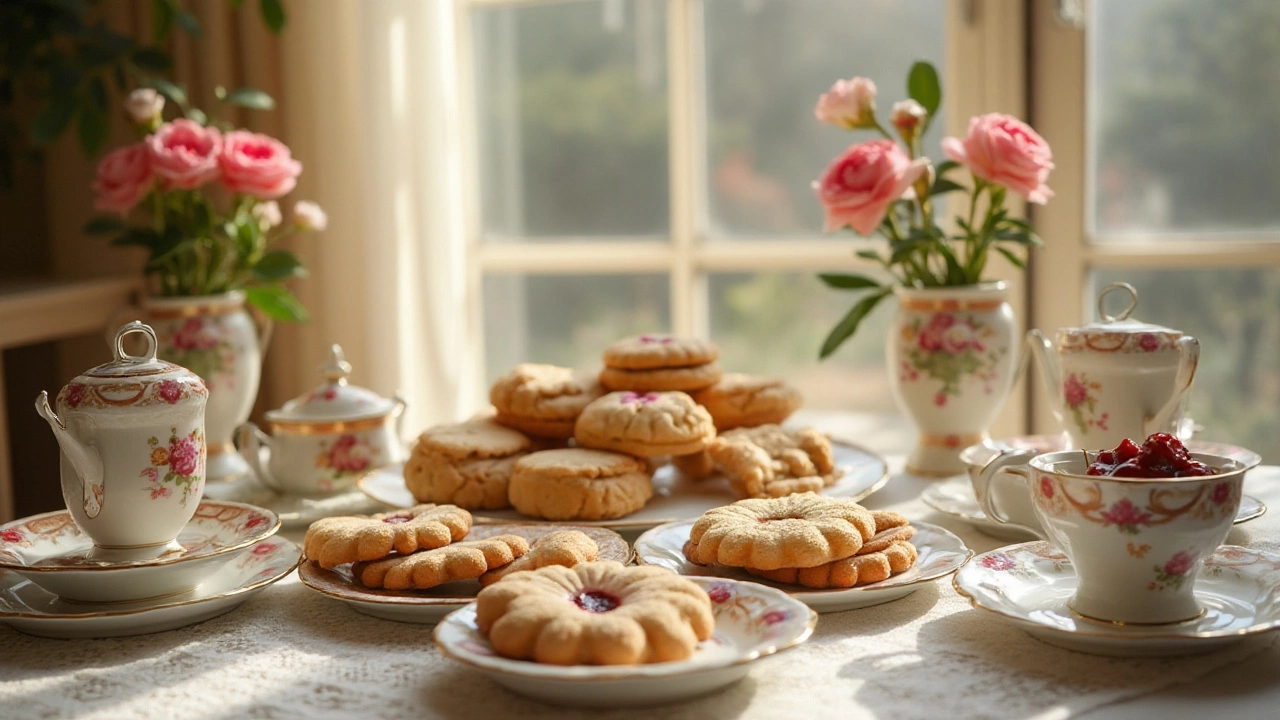
There's a magic in the air when the scent of freshly baked cookies fills the kitchen. With so many varieties and flavors, it's no wonder that baking cookies at home is a cherished pastime for many. Each type of cookie carries with it a bit of history and a whole lot of flavor, offering a unique twist to your baking experience.
In this article, we're delving into the most popular types of homemade cookies. Whether you're a fan of the timeless chocolate chip or love the seasonal charm of holiday cookies, there's always a recipe waiting to be perfected and shared. Pull up a chair, grab your favorite mixing bowl, and let's explore the sweet world of cookies.
- The Classic Chocolate Chip Cookie
- Holiday Favorites
- Unique Twists on Traditional Recipes
- Tips for Perfect Homemade Cookies
The Classic Chocolate Chip Cookie
The journey of the classic chocolate chip cookie began back in the 1930s, thanks to an accidental invention by Ruth Wakefield at the Toll House Inn in Massachusetts. Wakefield was trying a new take on her Butter Drop Do cookies by adding chunks of Nestle semi-sweet chocolate, expecting them to melt and blend into the dough. To her surprise, the chocolate maintained its shape, giving birth to an iconic treat loved by millions around the world. Since then, the chocolate chip cookie has cemented its place as the most recognized type of homemade cookies.
What makes a chocolate chip cookie truly special is its perfect balance of texture and flavors. A well-baked cookie should have a slight crunch on the edges, while the center remains chewy and gooey. Achieving this balance involves precision and a few tricks up your sleeve. Key ingredients such as butter—preferably unsalted—brown sugar, and high-quality vanilla extract often make all the difference. enthusiast bakers know the secret lies in how these ingredients are mixed and baked. The chilling of the dough, which many consider a tedious step, is crucial in allowing the cookies to spread properly when baked, ensuring those coveted crispy chewy contrasts.
The Science Behind the Cookie
Understanding the science of baking can help us improve our cookie recipes. For instance, using bread flour instead of all-purpose flour boosts the chewiness because of its higher protein content. Similarly, resting the dough enhances the flavor because it allows the flour to fully hydrate and any flavors to meld together. Eggs play their part too: a bit of extra yolk can make for a softer textured cookie, while using cold butter can affect how the cookies spread in the oven.
Marc Summers, a food scientist, once stated,
"Baking is a science; a small change in the ingredients or process can lead to delightful new textures and flavors,"and this is evident in the wide variety of chocolate chip cookies available today. From thin and crispy to thick and cake-like, there are countless ways to experiment and find your perfect version of this classic.
Crafting the Perfect Cookie
Creating the perfect chocolate chip cookie requires a few essential steps. Begin by creaming the butter and sugars until light and fluffy, as this incorporates the necessary air and ensures a better texture. Gradually add in your eggs, one by one, followed by vanilla extract, making sure each is fully mixed. In a separate bowl, whisk together the flour, baking soda, and salt. Adding dry ingredients gradually into the wet mixture avoids over-mixing, which can lead to tough cookies. Finally, fold in your chocolate chips, using a combination of semi-sweet and milk chocolate for a deeper, more nuanced taste.
- Preheat your oven to the right temperature to prevent over-spreading.
- Scoop the chilled dough onto baking sheets lined with parchment paper.
- Bake for about 10 to 12 minutes, until the edges are crisp but the centers are still soft.
- Allow the cookies to cool for a few minutes on the sheet before transferring to a wire rack.
Emphasizing these techniques can elevate your baking game, ensuring popular cookies are not only delicious but also memorable. As you bite into a warm, freshly baked chocolate chip cookie, you’ll find that the simple pleasures of life often lie in homemade joys like these.

Holiday Favorites
The holidays bring a special kind of sweetness that can't be found at any other time of year. Whether it's the crisp air, the twinkling lights, or the aroma of freshly baked cookies wafting through the house, baking during the holidays is a tradition cherished by many families. Among the bevy of baked goods that grace holiday tables, a few iconic cookies have earned their place as timeless favorites.
Consider the sugar cookie, a staple in many households. These versatile treats are often decorated with colorful icing and sprinkles, transforming into miniature works of art that delight both young and old. The tradition of decorating sugar cookies dates back to the early 19th century in Germany, and their popularity spread rapidly, especially in America, where they became synonymous with Christmas. Cookie recipes have evolved, moving from the simple sugar-based concoctions to including spices like cinnamon and nutmeg that add warmth and depth to each bite.
No holiday cookie spread would be complete without the rich and chewy texture of gingerbread cookies. These spiced delights have a storied past, tracing back to the Middle Ages. Their association with the holidays is not just about their taste but also their versatility in being shaped into festive figures and structures. In Scandinavia, gingerbread houses are crafted with as much care and tradition as the cookies themselves, a practice that has been preserved for centuries. As Susan Styker noted, "Gingerbread is not just a cookie; it’s a canvas and a communal project, bringing people together in an act of creativity and celebration."
Another beloved addition to the holiday cookie offering is the homemade peppermint cookie. Often paired with chocolate, these cookies exude a fresh, invigorating quality that embodies the chill of winter. Historically, peppermint candies were a luxury item, but as they became more accessible, bakers found ways to incorporate them into various desserts. A peppermint chocolate chip cookie is a delightful spin on the traditional chocolate chip, infusing it with festive flair.
The holidays are also a time to celebrate family recipes passed down through generations. Perhaps one of the less common but beloved types is the rugelach, a traditional Jewish cookie that has found its way into secular holiday celebrations. Made with a dough enriched with cream cheese and filled with fruit or nuts, rugelach speaks to the multicultural influences that can be seen in popular cookies today. Its curves and spirals symbolize unity and continuity, fitting perfectly into the ethos of holiday gatherings.
For bakers eager to try their hand at these festive staples, here’s a simple guide to crafting a perfect batch of holiday cookies:
- Ensure all ingredients are at room temperature to achieve the best blending consistency.
- Use fresh spices to maximize flavor impact, especially in spiced cookies like gingerbread.
- Consider adding a sprinkle of zest or extract, such as lemon or almond, to sugar cookie dough for an unexpected twist.
- Chill dough before baking to prevent spreading and maintain cookie shapes.
- Get creative with decorations; use royal icing for precise lines and vibrant colors for visual appeal.
These treasured cookie recipes are not only a treat for the taste buds but also a way to bring people together, fostering warmth and joy. Whether you stick to tradition or infuse your cookies with modern twists, the spirit of the holidays is captured in every bite.

Unique Twists on Traditional Recipes
Traditional cookie recipes feel like an old friend, familiar and comforting. Yet, there is something thrilling about adding a unique twist to these recipes, bringing new life to beloved classics. The chocolate chip cookie might seem untouchable in its perfection, but subtle changes can make it feel brand new. Consider adding a sprinkle of sea salt before baking or stirring in chopped dark chocolate instead of the usual chips. It’s these little variations that can turn a regular homemade cookie into a gourmet treat. Using brown butter instead of regular melted butter can also introduce a nutty, rich flavor – a small change with a big impact.
The holiday season opens a whole new world of possibilities for cookie innovation. Gingerbread cookies, for example, can be taken to the next level by incorporating spices like cardamom or a hint of black pepper. The result is both traditional and excitingly new, a conversation starter at any festive gathering. Experimenting with different types of sweeteners, such as honey or maple syrup, can yield surprising results, balancing flavors in unexpected ways.
According to renowned chef and TV personality, Ina Garten, "Adding just a dash of unexpected flavor can transform an old family recipe into your own signature dish."Such adaptations make these cookies as much about the baker's unique taste preferences as they are about honoring seasonal traditions.
Nutty additions are also a delightful way to transform classic cookies. Almond flour can be used in place of regular flour not only for its nutritional benefits but also for the delicate, sweet taste it imparts. Pecans, walnuts, or even macadamia nuts can provide a welcome crunch. Nuts can be toasted to enhance their flavor before folding into your dough.
Adding Fruits and Spices
Including dried fruits like cranberries or apricots can introduce a sweet and tart contrast, while a dash of cinnamon or nutmeg brings warmth and depth. For those feeling adventurous, experimenting with herbs such as rosemary or thyme offers a savory twist to balance out sugary sweet notes.Texture can also be played with through alternative ingredients. Coconut shavings or oats can make a cookie feel more filling and wholesome, while adding texture and nutrition. Consider creating filled cookies, with centers of gooey caramel or zesty lemon curd, adding a surprise inside with each bite. Each alteration changes the eating experience, transforming the cookie into something more layered and complex.
The Art of Presentation
The way cookies are presented can also add a unique twist. Rolling balls of dough in colorful sugar crystals before baking can give them a festive, sparkling finish. Baking with unique molds or cutting them into different shapes brings a touch of whimsy and personalization.Adapting traditional recipes allows bakers to infuse their own creativity and preferences into their cookie creations. It’s a wonderful way to breathe new life into time-honored classics while staying true to the comforting essence of homemade baking. These twists can transform simple recipes into not only a feast for the palate but also for the soul, sharing a piece of the baker's personality in every bite.

Tips for Perfect Homemade Cookies
Baking perfect homemade cookies is as much an art as it is a science. It's the fine balance between the right ingredients, technique, and your own personal touch that transforms a good cookie into a memorable one. One of the simplest yet most effective tips is to ensure your butter is at the right temperature. Softened butter, which yields slightly to pressure, will cream with sugar more effectively, leading to a better rise and texture in your cookie. Another essential tip is to measure your flour correctly. Scooping flour directly from the bag can pack it too densely, leading to tougher cookies. Instead, spoon flour into your measuring cup and level off with a flat edge for accuracy.
Understanding your oven is crucial. An oven thermometer is a small investment that can save you from an entire batch of overbaked cookies. Ovens often run hotter or colder than the dial indicates, so keeping an eye on actual temperature can make a world of difference. Experimenting with bake time and chill time can also refine your cookie's texture and flavor. Chilling the dough for half an hour before baking not only helps the flavors meld together but also minimizes spreading during baking, giving you those beautiful thick cookies.
"The secret to baking is in the love—and exact measurements. Treat your dough gently, and it will return the favor," advises pastry chef and baking authority Dominique Ansel.
Avoiding overmixing is another golden rule. Once the dry ingredients hit the wet, mix just until everything is incorporated. Overworking the dough activates gluten formation, leading to tough cookies instead of soft and chewy. In terms of sugar, consider the type you use — brown sugar contributes to chewiness due to its molasses content, while white sugar results in a crisper cookie. Implementing a balance or adjusting based on your preference can add variety to even the most basic cookie recipes.